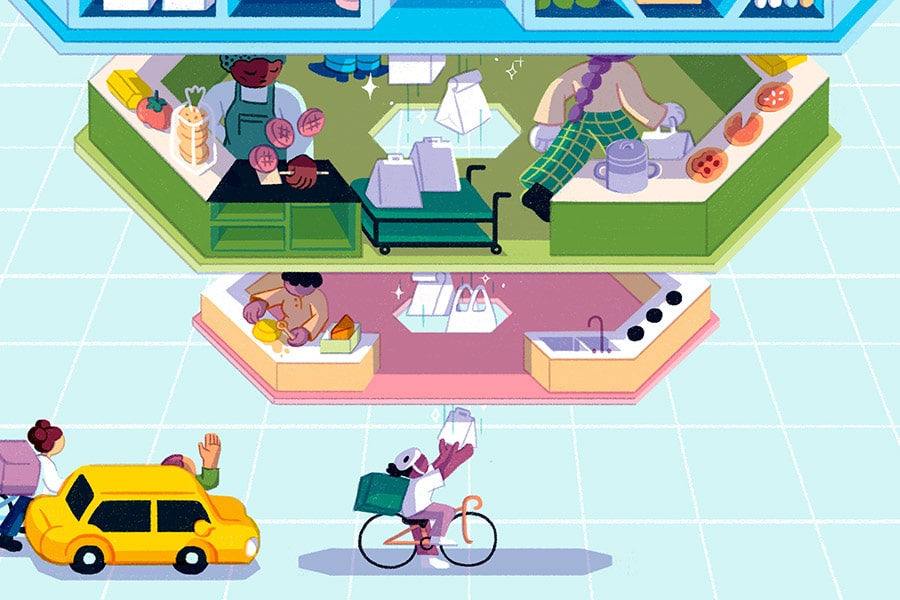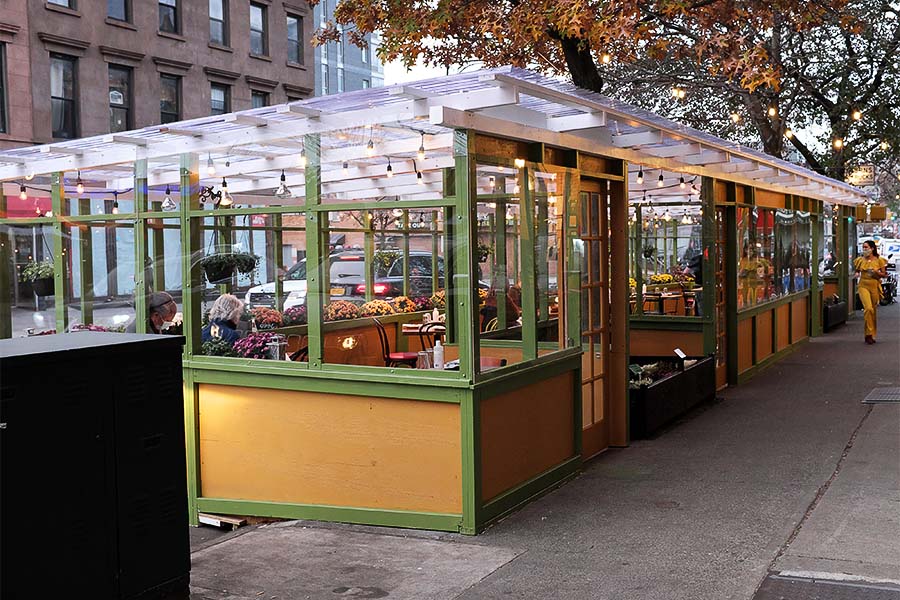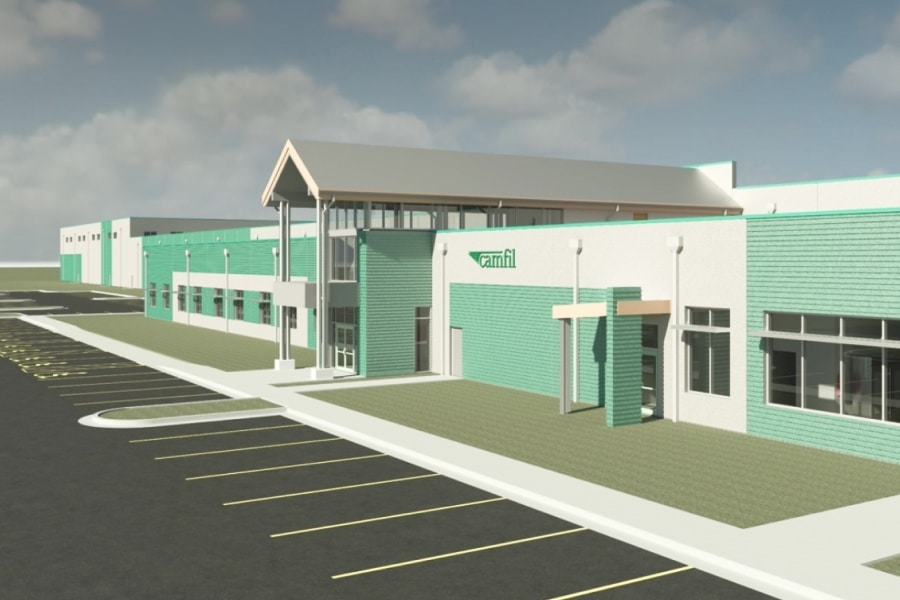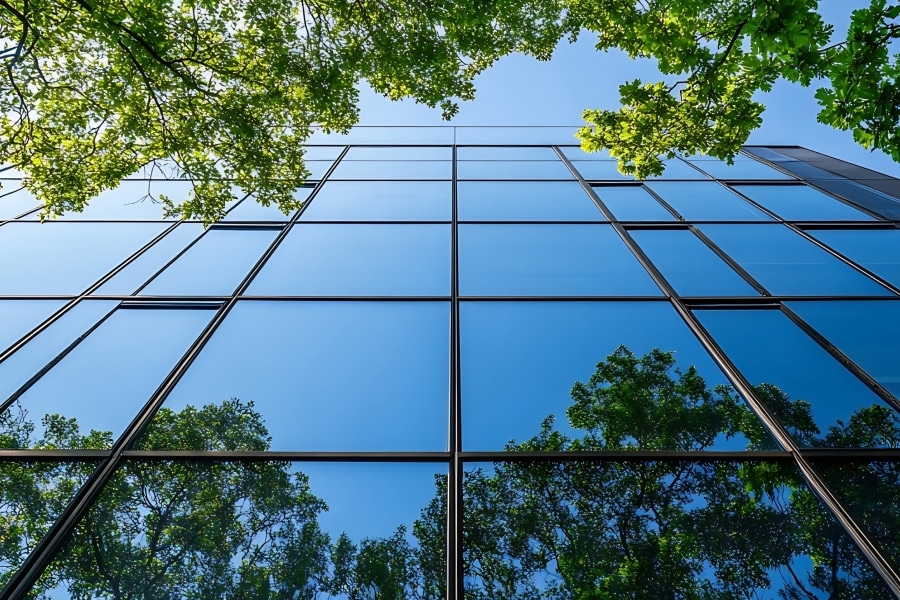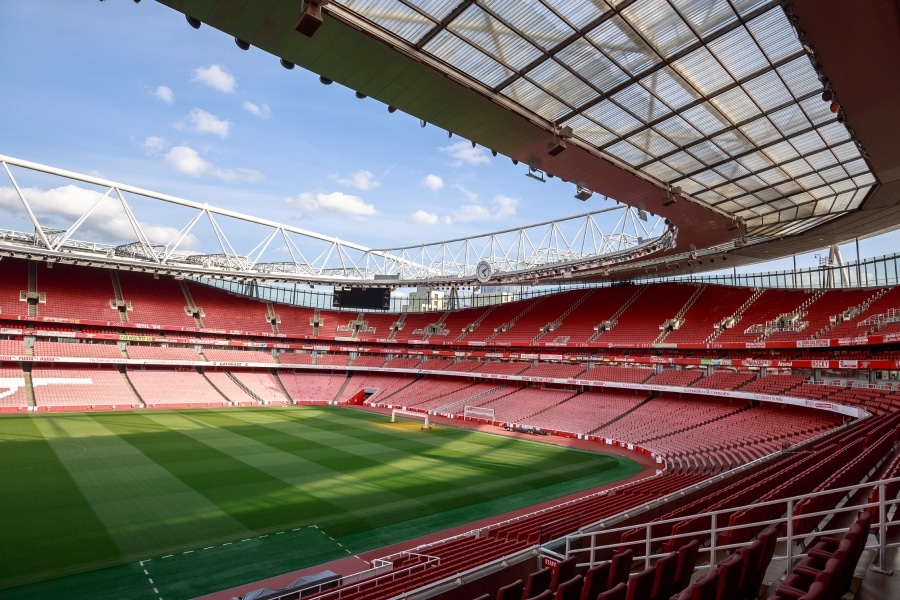The emergence of several apparently effective COVID-19 vaccines and the expectation that they will be distributed widely in the coming months suggests an end to the public health crisis of 2020 may be on the horizon.
But with a winter transmission surge already underway, many businesses will likely be operating under some sort of restrictions for several months to come, adding a bevy of challenges for enterprises that have already been in survival mode for almost a year.
Nowhere is this more evident than the restaurant business, where success requires not just a deft touch in the kitchen but a competitive flair in the dining room. It’s never just a meal—a successful restaurant has to deliver a memorable experience to complement the food.
COVID-19-driven restrictions on indoor gatherings in many states have forced dining rooms across the country to close. During COVID-19, restaurants have adapted by moving diners outdoors into patio and courtyard spaces and, in many cities, onto sidewalks and streets closed to vehicle traffic.
Still, even outdoors restaurants and bars have had to isolate parties to comply with social distancing and other reopening rules. Based on new COVID-19 guidelines from the Centers for Disease Control and Prevention (CDC), restaurants have jerry-rigged temporary structures to isolate patrons at outdoor tables—structures that have come to be known as “streeteries.” In New York, construction firm DB Partners says it has built at least 20 relatively permanent, well-appointed dining pods that the firm says provide a safe, enjoyable restaurant experience.
Kelli Zaremba leads business development for Kahler Slater, an architecture firm focused on hospitality, corporate and residential projects. The COVID-19 pandemic has severely curtailed business among the firm’s restaurant clients; ballrooms and banquet halls remain empty.
“I realized in July that everyone was focused on when their kids could get back to school and what that would look like,” Zaremba said. “But nobody was thinking about what would happen in November. Restaurants are an important segment of our design clientele, and I wondered in particular what they were going to do. Outdoor dining had gotten us through the summer and fall. I started reaching out to our contacts in the hospitality and dining industry across the Midwest and asked them what they would do in the winter.”
Inside or outside
Outdoor dining during the winter is more likely to be welcome in places like Scandinavia, where people have a traditional affinity for the cold. It will also be perfectly feasible in North America’s more temperate cities, like Los Angeles, where temperatures remain mostly ideal for outdoor dining year-round.
It will be more difficult, however, in Midwestern cities like Chicago and Milwaukee, where freezing temperatures and inclement weather are common in January and February—and sometimes well into March and early April. The same goes for New York, one of the most vibrant restaurant and fine dining cities in the world. New York City restaurants have developed creative, COVID-friendly outdoor dining options to keep diners safe out of necessity to keep their businesses open while following new guidelines.
A lot of restaurants installed air purification systems over the summer and early fall in an attempt to use technology to assure diners that their indoor spaces were safe. “But the real problem is the politics of COVID,” Zaremba said, referring to some states whose governments have imposed restrictions that don’t allow for any indoor dining. “In Cook County, where Chicago is, it was clear they would shut down all the restaurants, regardless of what they’d installed—it was not a case-by-case policy.”
[SEE ALSO: How the Pandemic Served Up a Re-Think of Restaurant Design]
Colleagues at Kahler Slater began asking: “What if we could create something that provided an atmosphere that would allow you to celebrate and feel special, but also safe, like the ones restaurants had installed outside, but inside the dining room?”
The conversation produced several potentially innovative design concepts—although, as of this writing, the firm has yet to commission any concept for construction. Pods could be designed with seating for intimate one-to-one date nights or family gatherings, or even as stand-up bar settings. “The design we really liked looks like a camper,” Zaremba said, “with rounded corners, like a retro-designed trailer.”
To provide a safe and enjoyable experience, the pod would need to include comfortable seating, attractive lighting, heating/cooling and an onboard sanitizing system, such as a mister for an enzymatic solution for use between seatings. “We looked at a combination of in-floor radiant heating and a ventilation element drying fresh air into the space,” Zaremba said. To be cost-effective, each pod probably would have a maximum seating capacity of six, she estimated. And there would need to be a system to get the server’s attention.
Social media moments
From a design perspective, the pods would need to deliver something other than an imperfect copy of the aesthetic experience of the original dining room. They would need to provide their own unique ambience. “We were thinking in terms of ‘Instagrammable’ moments,” Zaremba said, referring to the popular social media platform, “moments of celebration, because through all of this we’ve been denied experiences we had taken for granted prior to the pandemic. There’s no point in trying to deny that we’re in a crisis; why not create a memorable shared experience that captures this time?”
One concept the firm envisioned was a pop-up restaurant inside a large interior space, such as a ballroom, with tables socially distanced for isolation inside that space. That left the question: How do you create ambience in this small area? “The challenge was to create intimacy in an enclosed dining pod, while still retaining the voyeurism that is part of the restaurant dining experience,” Zaremba said.
‘We are not looking to make money building pods. We just want to help businesses with limited resources to get this done.’
Kelli Zaremba, business development, Kahler Slater
Alongside the aesthetic and technological questions, the designers had to contend with economics. What would be the lifecycle of these new pods? What would happen to them once the pandemic passed? Could the pods, for example, become a form of temporary housing? Could they become part of a cultural installation?
“On Randolph Street in Chicago, where they blocked off the roads, could we bring in local artists to paint the pods and then auction them off to become ‘she-sheds’ in people’s backyards?” Zaremba said. “We reached out to a couple of muralists we know in Chicago, and they loved the idea as a way to engage with the community. It’s the kind of program that might be hard to scale up in a large city, but a small city could pull it off.”
The cost challenge
The biggest commercial challenge for dining pods would be that small, independent restaurant firms would have difficulty affording manufactured pods, which Zaremba estimates would cost between $7,000 and $13,000 each. If the pandemic-driven recession drags on long enough, some cities could lose the small establishments that make them distinctive (many already have); only the investor-backed chain restaurants that could afford expensive social distancing measures could survive.
One place where local government, or perhaps corporate sponsors, could play a role in protecting the independent, one-of-a-kind restaurants that give a city its character would be to subsidize the cost of outdoor dining pods. In a small city with one or two dominant employers, fostering the local restaurant industry might make quality-of-life sense, as a way of retaining key executives and employees who might otherwise look for jobs in more vibrant cities.
Another sponsorship concept, Zaremba suggested, might involve infrastructure investment. “For example,” she said, “think of an electric car manufacturer like Tesla, which has an interest in cities installing charging stations on their streets. Those stations could initially be used to provide the power for dining pods for the duration of the pandemic crisis. After that, the charging stations would continue to benefit the community by encouraging people to drive electric vehicles.”
Thus, outdoor dining could provide the added value to justify municipal or corporate investment in infrastructure improvement. Participation in the program could be differentiating for the restaurants as well. “Restaurant customers might be more inclined to take advantage of valet parking if they knew the valet could charge their car in addition to parking it,” Zaremba said.
Kahler Slater approached this as a “thought leadership” exercise, Zaremba said. The firm doesn’t intend to market dining pods, although it has approached commercial fabricators about manufacturing them. The firm can provide construction plans and other documentation.
“We are not looking to make money building pods,” Zaremba said. “We just want to help businesses with limited resources to get this done.”
